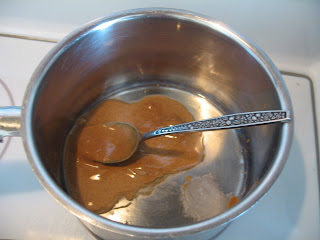This was delicious, except I think I'm not quite ready for something quite so "sticky" on my esophagus ... because as I said before, that's where the problem is, and after eating the yummy yummy almond sauce, I felt vague tightness in the throat. I should just stick with whole washed nuts and whole vegies and forget that almond butter exists for just a while longer.
Thai Almond Sauce
3 tablespoons coconut oil
3 tablespoons almond butter
1 1/2 tablespoons minced ginger
1/2 onion, sliced
5 cloves garlic, sliced or minced
1 baby zucchini, sliced
1 baby yellow squash, sliced
3-4 ribs celery, sliced
sea salt
 |
| pre-cut the vegies |
 |
| heat the almond butter and coconut oil over low heat |
 |
| continually stirring, sautee the onion, garlic and ginger ... then add in the remaining vegies and seasonings. some additional water will be necessary to prevent burning |
 |
| yum, there's nothing like young and tender asparagus! |
 |
| serve with brown rice, or just eat it plain with vegies like me :) |
Comments
Post a Comment